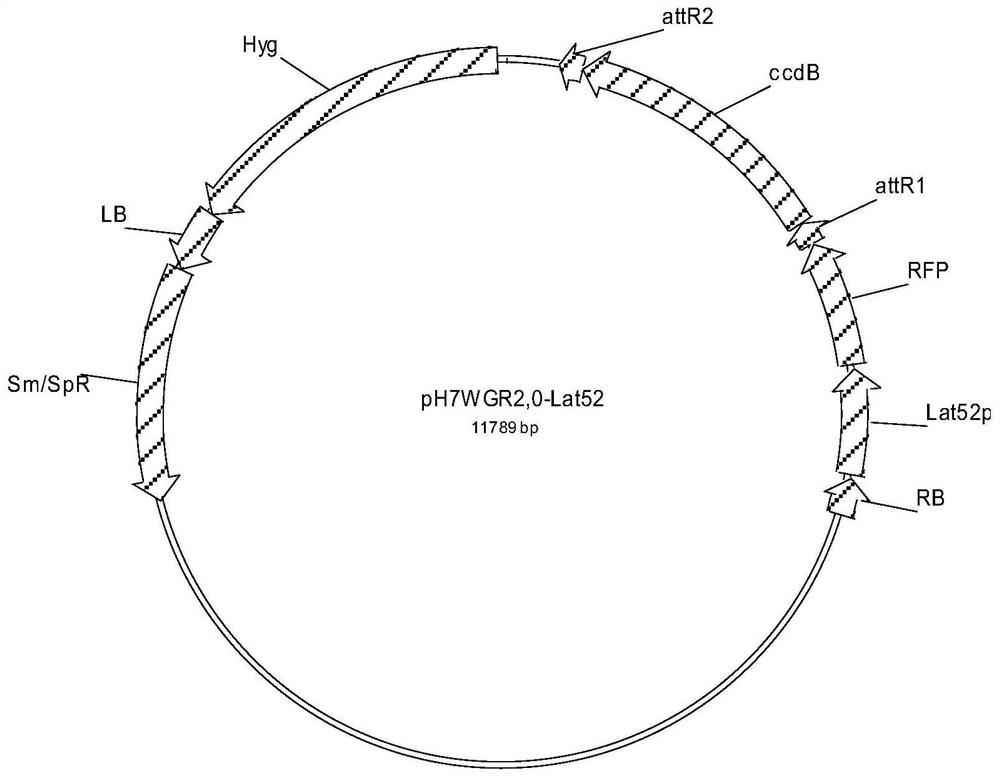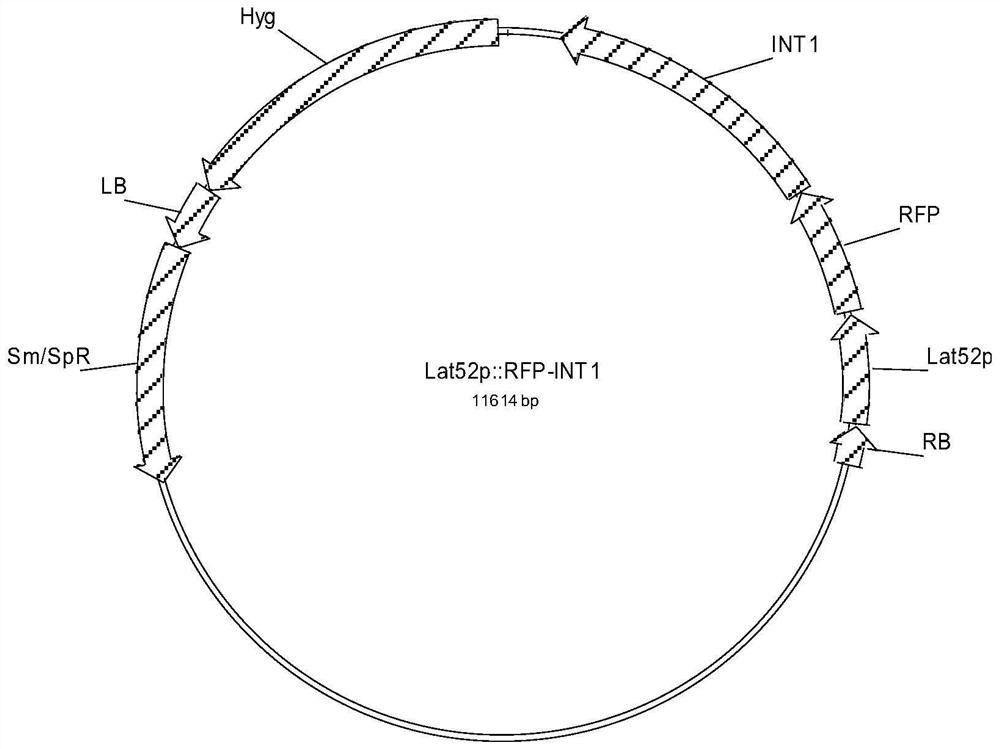Construction method and application of fluorescence marker for pollen tube vacuole of plant
A technology of plant pollen and construction method, applied in the field of genetic engineering, can solve problems such as lack of molecular means
- Summary
- Abstract
- Description
- Claims
- Application Information
AI Technical Summary
Problems solved by technology
Method used
Image
Examples
Embodiment 1
[0018] Example 1 Obtaining of Arabidopsis thaliana inositol transporter INT1 gene sequence and construction of plant expression vector
[0019] Log in to the Arabidopsis Information Resource Database website
[0020] https: / / www.arabidopsis.org / servlets / TairObject? type=sequence&id=125264, find the sequence (SEQ ID No.1) of the inositol transporter INT1 gene, design PCR amplification primers according to the CDS of INT1,
[0021] INT1 CDS-F:5'-CACCatgacattgacgatcccaaac-3'
[0022] INT1 CDS-R:5'-ttaagattgagatccctgctcg-3'
[0023] The wild-type Arabidopsis Col-0 was cultivated, and the seedlings of Arabidopsis thaliana grown for 4 days in long-day sunlight were taken as materials, and the total plant RNA was extracted with the kit of Kangwei Century Company, and the cDNA was obtained by reverse transcription PCR, and then the cDNA was used as a template to amplify Increment sequence.
[0024] The specific steps for extracting RNA are as follows:
[0025] (1) Take 30-50 mg o...
Embodiment 2
[0047] The acquisition of embodiment 2 transgenic Arabidopsis plants
[0048] Firstly, the plants are cultivated to the flowering stage, and then transformed with the Agrobacterium dipping method, and the transgenic plants are screened after the seeds are harvested.
[0049] The surface disinfection and cultivation methods of Arabidopsis seeds are as follows:
[0050](1) Use a sieve to remove excess impurities and only keep the seeds, and divide into 1.5mL centrifuge tubes. Treat with 70% ethanol (prepared with sterilized Tween water) for 5 minutes in an ultra-clean bench, then treat with 2.6% NaClO (prepared with sterilized Tween water) for 10 minutes, then rinse with sterilized Tween water four times, Then spread the seeds evenly on 1 / 2MS solid medium.
[0051] (2) Vernalize in a refrigerator at 4°C for 3 days, and then place them in a long-day light incubator for more than 4 days. After the seeds germinate and grow larger true leaves, the seedlings can be transplanted int...
Embodiment 3
[0068] Example 3 Fluorescence Observation of Transgenic Arabidopsis
[0069] After the transgenic plants flowered, pollen was collected for pollen tube germination and fluorescence observation.
[0070] (1) Take 10 mL of freshly prepared liquid pollen germination medium in a new graduated centrifuge tube.
[0071] (2) Weigh 0.1 g of special agar powder for pollen germination with low melting point, heat it in a microwave oven to melt it completely, and be careful not to boil the culture medium and overflow the centrifuge tube.
[0072] (3) Pipette 1.9 mL into a petri dish with a diameter of 5.5 cm, spread it evenly on the bottom of the petri dish, open the lid and cool for a few minutes to make it solidify.
[0073] (4) Use special tweezers for pollination to take the best flower that blooms that day, remove the pistil, and gently apply pollen to the surface of the medium, pay attention to spreading evenly, and do not puncture the medium.
[0074] (5) Take a petri dish with ...
PUM
 Login to View More
Login to View More Abstract
Description
Claims
Application Information
 Login to View More
Login to View More - R&D Engineer
- R&D Manager
- IP Professional
- Industry Leading Data Capabilities
- Powerful AI technology
- Patent DNA Extraction
Browse by: Latest US Patents, China's latest patents, Technical Efficacy Thesaurus, Application Domain, Technology Topic, Popular Technical Reports.
© 2024 PatSnap. All rights reserved.Legal|Privacy policy|Modern Slavery Act Transparency Statement|Sitemap|About US| Contact US: help@patsnap.com










